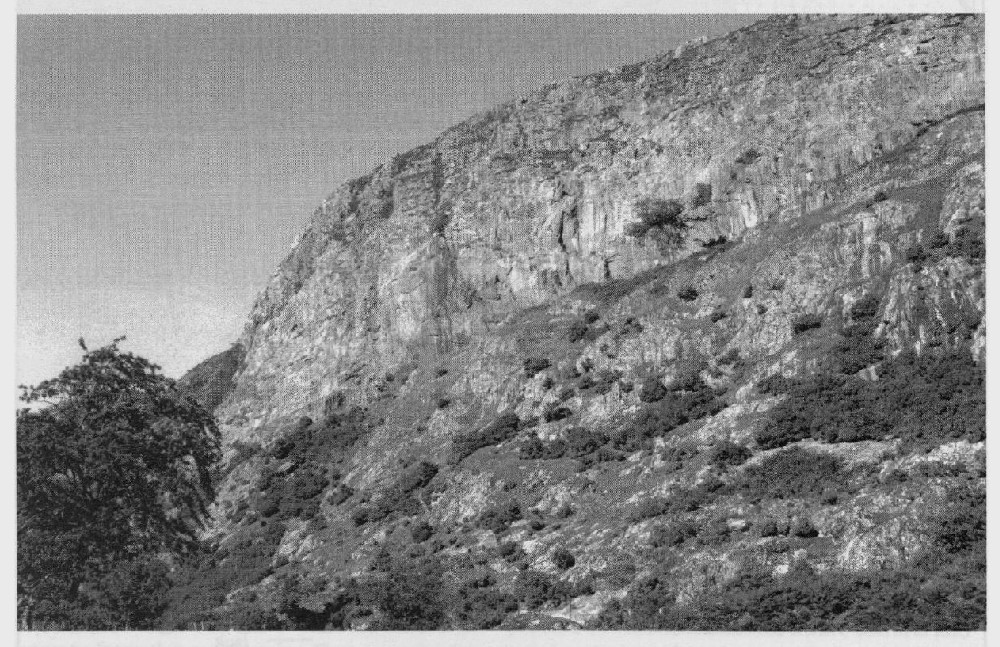Aberscross Burn–Kinnauld
N.J. Soper
Introduction
This site is complementary to Creag na Croiche in that it is located in the outer part of the migmatite complex surrounding the
Description
The site comprises two separate areas, Aberscross Burn to Morvich and Morvich to Kinnauld
The burn exposes flaggy psammites and subordinate semipelites of the
To the north-west, on crags overlooking Strath Fleet
North-west of Morvich, the proportion of leucosome increases to between one- and two-thirds and a variety of migmatite types are developed. The commonest type are stromatic migmatites, developed from inter-layered psammite + semipelite, the leucosome being preferentially developed in the more-micaceous lithologies, interbanded with discrete layers of unmigmatized psammite. Semipelites and pelites produce various types of migmatite: streaky migmatites with biotite schlieren; layered types with more-continuous biotite-rich layers; and oligoclase-bearing augen gneisses. All contain inclusions of less-migmatized host semipelite, normally with biotite selvages, and apparently derived from boudins. There are rare patches of agmatite, typically developed in foliated amphibolite, where feldspathized amphibole-rich fragments are veined and enclosed by aplitic granitoid material; examples were described by Ma (1948).
Evidence of syn-migmatization deformation is seen in a general eastward steepening of the foliation, and the appearance of irregular, 'swirling' folds on all scales. Towards the western end of the GCR site, north of Kinnauld, the foliation has a more-regular north-easterly strike, reflecting the trend of the quartz-monzodiorite-migmatite contact that lies 3 km to the west. However, the foliation dips steeply south-east, away from the contact. Original features of the Moine rocks, such as the regional D2 linear fabric, are largely obliterated. In addition to the normally parallel-sided, narrow aplitic microgranite and quartz-feldspar pegmatite veins, there are larger sheets and diffuse masses of foliated granodiorite and pink, unfoliated aplitic granite. There are numerous transitions between the various 'igneous' components of the complex, and evidence of both intrusive and replacive relationships.
Interpretation
The progressive obliteration of the flaggy foliation and the L2 linear fabric with increasing migmatization is well displayed at the Aberscross Burn-Kinnauld GCR site and establishes that the migmatization post-dates the main regional deformation and metamorphism of the Moine country rocks. Syn-migmatization deformation takes the form of irregular, 'swirling' folds of the migmatitic layering. The more-regular strike and steep 'outward' dip seen towards the western end of the site as the central granodiorite contact is approached, passes westwards into a zone of contact-parallel folding, seen at the Creag na Croiche GCR site. These structures support the view that the ballooning central granodiorite distended its own migmatite envelope (Soper, 1963).


